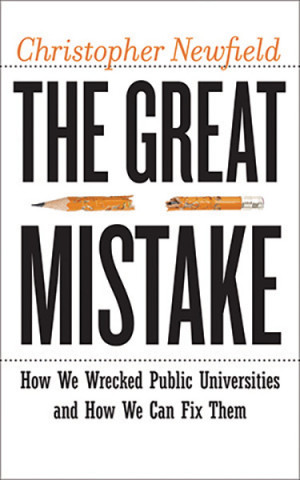With the pension report and its dissent now posted, the California Professor concludes, at the end of a helpful analysis, that "these proposals are an effort to replace the furloughs with permanent cuts in total compensation." The Daily Cal summarizes the decline narrative, and includes the kind of odd sound bites that often emerge from our UC Oakland non-campus. A Senate friend who helped draft the Dissenting Statement wrote in to explain why some of the presidential pension math I criticized is indeed correct. His comment starts below the jump.
Each year that an individual employee works at UC represents another year of service credit, in the formula for that person's pension from UCRP. Thus, the Plan incurs a liability each year for all future pension payments that result from an additional year of service, for all members of UCRP.
Both contributions and investment earnings are necessary to provide the funds for those future payments, in the following way. Ignoring past service and the funds already in the plan, the "normal cost" of the plan is the amount that must be contributed this year, through a mix of employer/employee contributions, to meet those future pension payments. How is that amount determined? The funds are going to be invested, so it isn't necessary to put in the full amount that will be paid as future pensions. It is assumed that the assets in the Plan will earn 7.5% annual return, and if that assumption along with the actuarial assumptions about the pattern of dates of separation or retirement, mortality (i.e., number of years spent in retirement, receiving a pension), and so on hold perfectly, then the amount contributed as normal cost will provide exactly enough funding over time, to meet the anticipated future pension payments that are attributable to the current year of service.
Expressed as a percentage of payroll (covered compensation, precisely), the normal cost of the current UCRP provisions is 17.6%. In the President's letter, the difference between 17.6% and 6% (4% employer contributions plus 2% employee contributions) is indeed 11.6%. This is a correct calculation.
Investment earnings are of course another source of funds. If the plan were fully funded, investment earnings greater than 7.5% would indeed offset shortfalls in contributing full normal cost. But the earnings have to exceed 7.5%, not 0%; 7.5% was required in order for the funds already in the plan to be sufficient to meet the previously incurred liabilities for future pension payments (i.e., those based on past service). Ignoring what is paid out as pensions, the funds need to grow at 7.5% just to keep pace with future liabilities; remember, that was how it was determined what should be contributed to fund pensions for past service.
In fact, the plan is underfunded by a large amount, so not only is the full normal cost needed, but the Plan needs additional contributions to amortize the unfunded liability. Earnings greater than 7.5% obviously reduce the unfunded liability, and any dollars earned in excess of 7.5% substitute one-for-one with higher contributions, but we are not going to be able to invest our way out of the hole the Plan is in.
These notions are covered in more detail in various documents on the Academic Senate's web site; two that are definitely worth reading are the following: (2007) (2010)
I never promise you a Rose Bowl? - Part 5
7 hours ago




4 comments:
is it possible to move the date of the Regents Dec meeting/vote on the matter? -- so that it occurs after the JLAC (Joint Legislative Audit Committee) publish their findings in January 2011 on the in-progress state audit of UC.
The second-to-last link in your post (to the 2007 AS document) appears to be broken.
Thanks Aldo. It is fixed.
only fitting then that UC should drop the one major effort to think through issues of academic planning: http://www.scribd.com/doc/36922095/Powell-Non-Endorse-Choices
Join the Conversation
Note: Firefox is occasionally incompatible with our comments section. We apologize for the inconvenience.